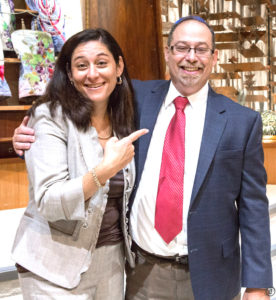Would you like  a billion dollars? Software companies, both startups and established firms, are selling like hotcakes. Some are selling for millions of U.S. dollars. Some are selling for billions. While the bulk of the sales price often goes back to venture financiers, a sale can be sweet for equity-holding employees, and even for non-equity employees who get a bonus. Hurray for stock options!
a billion dollars? Software companies, both startups and established firms, are selling like hotcakes. Some are selling for millions of U.S. dollars. Some are selling for billions. While the bulk of the sales price often goes back to venture financiers, a sale can be sweet for equity-holding employees, and even for non-equity employees who get a bonus. Hurray for stock options!
A million U.S. dollars is a lot of money. A billion dollars is a mind-blowing quantity of money, at least for me. A billion dollars is how much money Sun Microsystems paid to buy MySQL in 2008. Nineteen billion dollars is how much money Facebook is spending to buy the WhatsApp messaging platform in 2014 (see “With social media, it’s about making and spending lots of money”).
I’m going to share some analysis from Berkery Noyes, an investment bank that tracks mergers and acquisitions in the software industry. Here’s info excerpted from their Q1 2014 Software Industry Trends Report:
Software transaction volume declined four percent over the past three months, from 435 to 419. However, this represented a 14 percent increase compared to Q1 2013. Deal value gained 72 percent, from $22.6 billion in Q4 2013 to $38.8 billion in Q1 2014. This rise in aggregate value was attributable in large part to Facebook’s acquisition of Whatsapp [sic], a cross-platform mobile messaging application, for $16 billion. The top ten largest transactions accounted for 61 percent of the industry’s total value in Q1 2014, compared to 55 percent in Q4 2013 and 38 percent Q1 2013.
The Niche Software segment, which consists of software that is targeted to specific vertical markets, underwent a ten percent volume increase in Q1 2014. In terms of growth areas within the segment, deal volume pertaining to the Healthcare IT market increased 31 percent. Meanwhile, the largest Niche Software transaction during Q1 2014 was Thoma Bravo’s acquisition of Travelclick [sic], which provides cloud-based hotel management software, for $930 million.
According to Berkery Noyes, the niche software market was the largest of four segments defined by the bank’s analysts. You can read about the transactions in the business, consumer and infrastructure software segments in their report.
Why would someone acquire a software company? Sometimes it’s because of the customer base or the strength of a brand name. Sometimes it’s to eliminate a competitor. Sometimes it’s to grab intellectual property (like source code or patents). And sometimes it’s to lock up some specific talent. That’s particularly true of very small software companies that are doing innovative work and have rock-star developers.
Those “acqui-hires” are often lucrative for the handful of employees. They get great jobs, hiring bonuses and, if they have equity, a share of the purchase price. But not always. I was distressed to read about an acquisition where, according to one employee, “Amy”:
Under the terms of Google’s offer, Amy’s startup received enough money to pay back its original investors, plus about $10,000 in cash for each employee. Amy’s CEO was hired as a mid-level manager, and her engineering colleagues were given offers from Google that came with $250,000 salaries and significant signing bonuses. She was left jobless, with only $10,000 and a bunch of worthless stock.
The implication in the story, “The Secret Shame of an Unacquired Tech Worker,” is that this is sexist: The four male employees were hired by Google, and the one female employee was not.
We don’t know the real story here, and frankly, we probably never will. Still, stories like this ring true because of the brogrammer culture in Silicon Valley, and in the tech industry.
Let’s end with a bit of good news in that regard. According to market research firm Evans Data Corp.:
The number of females in software development has increased by 87% since first being measured in 2001, according to Evans Data’s recently released Developer Marketing 2014 survey. In 2014, 19.3% of software developers are women, or approximately three and a half million female software developers worldwide. While today’s number is strong compared to 2001, it is even stronger compared to the years of 2003 to 2009 when the percent of female developers dipped into the single digit range.
We are making progress.

 This is one of a series of articles I wrote for the monthly Bulletin of
This is one of a series of articles I wrote for the monthly Bulletin of